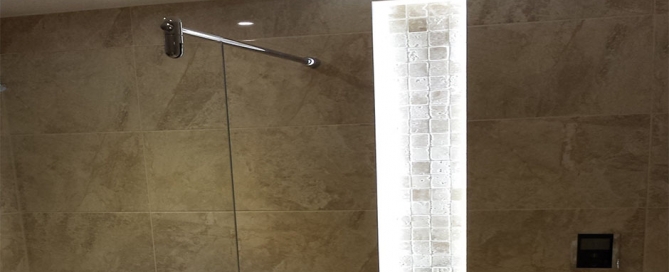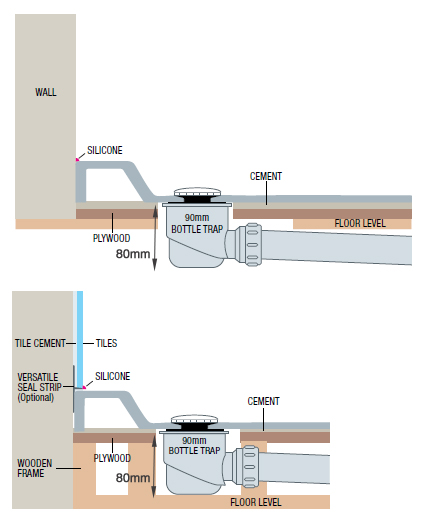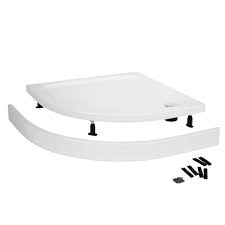Do You Need Low Pressure Taps?
Taps tend to be sold as being low pressure or high pressure. What does this mean? It simply means that the tap is suitable for either a low or high pressure water system. A low pressure system is typically around 0.2 bar and is gravity fed whereas a high pressure system is fed by the mains water pressure and is typically over 1.0 bar.
Determining whether you have a low water pressure system is relatively easy. If you have an airing cupboard with a hot water cylinder in it and a water tank in the loft feeding that cylinder then you probably have a low pressure system, otherwise known as a gravity system. If you are still not sure then turn on the taps in your bathroom. The cold water tap should have good pressure because most cold water pipes in the house come directly from the mains water feed. If the hot water tap has a significantly lower pressure when you turn the tap on then this indicates a low water pressure system.
If you find that you have a low pressure system then you need to buy low pressure taps. These taps do not restrict the flow rate in any way so you get whatever pressure your system is able to deliver.
Can a high pressure tap still work on a low pressure system? Yes, it can work but the flow rate is significantly reduced and could easily be rectified by fitting the correct tap in the first place.
Can a low pressure tap work in a high pressure system? As the internals are designed for maximum flow a low pressure tap in a high pressure system works exactly the same as a high pressure tap.
How To Use Mapei Aquadefense
Mapei Aquadefense is a liquid tanking system used in residential and commercial environments. If you have a shower or bath area that needs to be tanked prior to tiling then Mapei Aquadefense is a good product to start with.
Once the background surface has been sealed Aquadefense can easily be applied using a roller and the area will be ready for tiling in just 4 hours!
Please watch the video below for an explanation on how to use Mapei Aquadefense.
5 Luxury Items You Could Have In Your Next Bathroom
Everyone likes a bit of luxury and the bathroom is no different to any other room in the house when it comes to adding some ‘bling.’
So what items could you add to your next bathroom that will have your guests wondering whether you picked some lucky numbers?
A Waterproof Television
No one expects to see a television in the bathroom but they’re available. It’s just like any other TV in the house but sits within a waterproof frame. Cost varies as does size but if you want the wow factor this is one option to consider.
A Bluetooth Bathroom Cabinet
The bathroom cabinet has evolved. Of course you can still have the basic version with mirrored doors etc but if you want something special you can have one with swipe on/off sensor, LED lighting, demister pad and bluetooth speakers. It will even charge your tooth brush too.
LED Lighting
Lighting is often overlooked when planning new bathrooms. We have seen so many examples of a nice room but with one lonely looking bulb on the end of a ceiling rose. A bathroom should be an oasis of light so downlights work best because they create arcs of light. LED bulbs can be used but you can also opt for LED strip lighting under cabinets and behind displays that create mood and tranquility.
Underfloor Heating
No one likes stepping out of a warm bath on to cold tiles so underfloor heating though practical, can be considered a luxury. It also works well in wetrooms to dry the floor quickly after a shower.
A Digitally Controlled Shower And Bath
If you want the ultimate in control you can have a single digital panel anywhere in the room that controls the exact temperature and flow of the bath or shower or both. There is no need for the shower valve or bath taps so this option takes minimalist to the next level.
Can I Have A Low Profile Shower Tray?
Shower trays tend to come in two types, the classic chuncky design that have a large lip or the low profile trays which are often around 40mm high or lower. Most showrooms and bathroom catalogues tend to show low profile trays in their designs simply because they look great. Having a low profile tray creates a sense of space in the room as well as the face that it is nice not to have to step up into the shower.
Can everyone have a low profile tray then? Well the answer is yes and no. Yes, everyone can have the tray but not everyone can fit it directly to the floor. Low profile trays can only be fitted where there is access to suitable drainage and that the drainage runs inbetween floor joists. It is NOT a good idea to start drilling holes in your joists to accomodate drainage pipe so that it runs across the joists.
You will note that the bottle trap needs plenty of space both beneath the tray and around existing joists. You should also ensure that the trap has a high flow rating and that it can be easily maintained.
So what happens if your floor joists run in the opposite way to the drainage pipe? In this scenario you would have to raise the tray using an upstand kit. This raises the tray by around 100mm which allows space underneath for the trap and associated waste pipework.
Why Tanking Shower & Bath Areas Is Important
We have never considered tanking as an option. As far as we are concerned if a bath or shower is to be fitted, it should be done correctly.
So what is tanking? Put simply tanking is a waterproof membrane. Tanking systems are used in wet areas before the tiles are fitted. The tanking systems can either be liquid based in which case they are painted or rollered on, or sheet membranes which are much like wallpaper. The idea of the system is that once it has been fitted, the area is completely watertight. The background surface (such as plasterboard) cannot be damaged by water.
The reason why many companies don’t fit tanking systems is that it is an extra cost which has to be passed on to the customer. This cost is usually around £100 for supply and application of a wet system so in other words, it’s a cheap insurance for the life of the bathroom. Another reason why it isn’t fitted is because people believe that tiles are waterproof anyway. For the most part they are unless you are using natural stones such as travertines or marbles. People also believe grout to be waterproof and here’s where the confusion lies. Manufacturers advertise grout as being waterproof because it does not degrade in the presence of water. It is still a cement based product so it will still soak up water in the way any cement product would. That water can then transfer to the background surface such as plasterboard and that’s when the real damage starts to occur.
If you find that your shower area constantly has mould growing along the grout lines, chances are that yuor shower area was never tanked. Water has been absorbed by the grout and passed to the plaster behind which is now an ideal growth spot for mould.
Tanking is a necessary part of fitting a shower or bath area correctly and if it hasn’t been suggested to you then really you should be asking why not?
Thermostatic shower valve versus Manual Valve
Essentially there are two types of shower valves, thermostatic and manual. A thermostatic valve maintains a constant set temperature. As long as the valve is set to your preferred temperature you simply turn the shower on and it will maintain that temperature. A manual valve, on the other hand, involves adjusting the temperature for your desired comfort.
One of the key differences between the valves is when someone else in the house turns on a hot tap. With a thermostatic valve you shouldn’t notice any difference to the shower temperature as the valve will compensate for the drop in hot pressure. With a manual valve the drop in hot pressure can mean that the shower suddenly becomes very cold. As a result you need to adjust the valve temperature to make the water hotter but once someone else in the house has turned the hot tap off, suddenly the shower temperature becomes too hot thus requiring more adjustment.
Most thermostatic valves require that the water pressure for hot and cold feeds is equal in order to maintain the perfect temperature.










